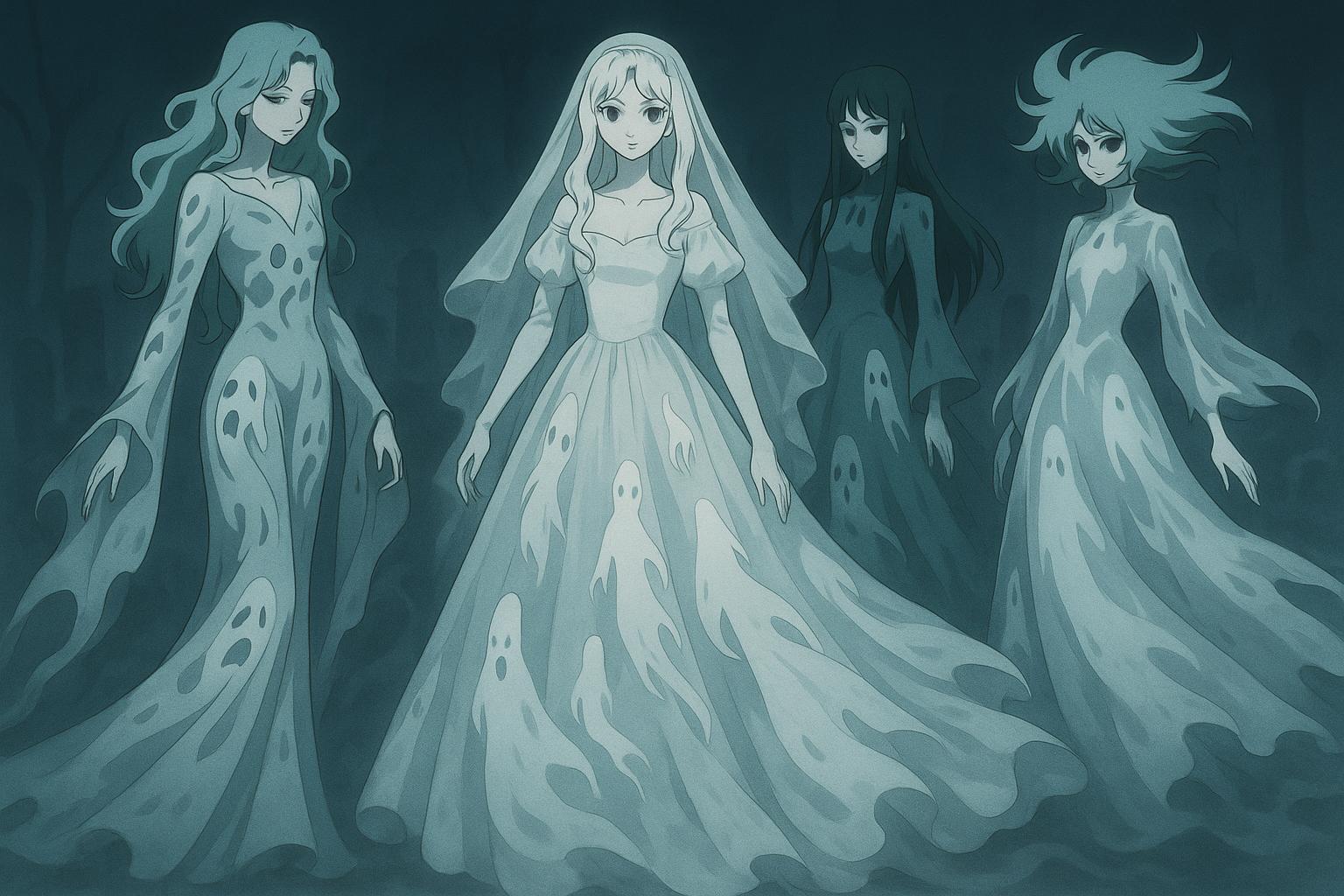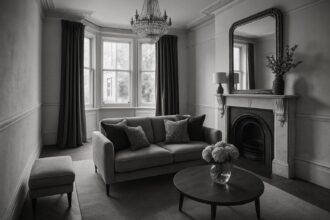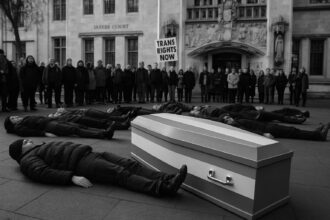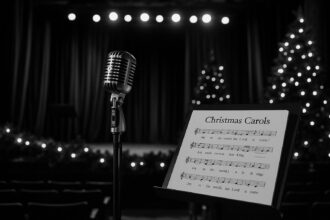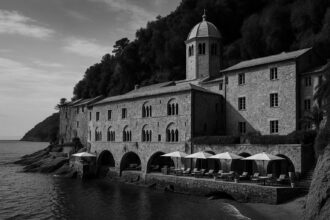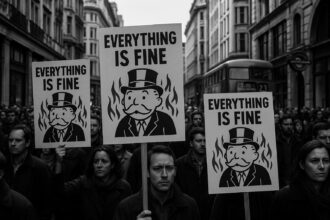The summer’s haunted couture trend redefines fashion as a medium of cultural narrative, blending spectral aesthetics with themes of rebellion and resilience amidst societal upheaval.
Fashion is often a reflection of the currents running through society, and this summer’s trend—dubbed “haunted couture”—is a haunting yet enchanting expression of our collective anxieties and aspirations. As explained by fashion editor Rachel Tashjian in her newsletter, Opulent Tips, the look captures the spirit of the times, presenting an ethereal aesthetic that has emerged as a dominant theme across recent fashion weeks. This trend, showcased in Dior’s Resort 26 collection, features spectral gowns entwined with a ghostly narrative in their accompanying film, Les Fantômes du Cinéma.
At a recent show held in Rome, Maria Grazia Chiuri presented her final collection for Dior, where a strictly all-white dress code for female attendees complemented an array of ghostly designs on the runway. Each look seemed to embody a tantalisingly ethereal quality: from a white tulle gown that appeared to float to a high-necked dress intricately beaded to mimic snakeskin, Chiuri’s designs were both otherworldly and deeply resonant. The culmination of the runway performance, highlighted by garments that evoked images of spectral figures, captured the zeitgeist more profoundly than simple fashion statements.
Haunted couture is characterized by various stylistic elements reminiscent of past trends: think the obsession with bloomers, underwear-as-outerwear, and the nostalgic appeal of cottagecore, all presented with a decay-inspired edge. The styling conveys chaos yet holds an allure—we see exposed bra straps, worn nighties, and dresses that balance between avant-garde and intimate. This concept of “sexy matron” serves not just as a visual statement but as a commentary on contemporary issues, such as existing inequalities and a collective yearning for rebellion against oppressive forces.
Catherine Spooner, a fashion scholar from the University of Lancaster, suggests that haunted couture is steeped in historical references, drawing parallels to significant periods like the French Revolution, when societal upheavals redefined clothing norms. She points out that figures like Marie Antoinette inadvertently shaped today’s narratives around underwear worn as outerwear. Moreover, the narrative of Miss Havisham from Charles Dickens’ Great Expectations resonates strongly in current designs, with its portrayal of a jilted bride trapped in a haunting atmosphere that mirrors today’s fashion landscape.
Events like Australian Fashion Week also underscored these themes. Designers such as Courtney Zheng and the duo Nicol & Ford channelled spectral motifs through their creations. Zheng’s collections featured sheer fabrics revealing more than they obscured, seamlessly blending historical inspiration with contemporary aesthetics. The translucence of these garments created a visual metaphor for the overarching theme of erasure—a deliberate commentary on the current socio-political climate, echoing concerns about the rollback of rights for gender-diverse communities.
Yet, this ghostly garb is not devoid of hope or agency. Amid the haunting imagery, Spooner highlights that these intimate garments can serve as tools of subtle rebellion. While they may evoke feelings of nostalgia and loss, they also encapsulate a spirit of defiance. In a world marked by uncertainty, haunted couture stands as a testament to resilience and empowerment, transforming the lingering ghosts of the past into symbols of transformation and reclamation.
As fashion continues to evolve amidst global shifts, haunted couture emerges not just as a fleeting trend, but as a profound statement interwoven with cultural narratives, societal fears, and the timeless desire for self-expression. This summer, the runway becomes not just a display of clothing, but a stage for the dance between history and modernity, seeking to redefine how we perceive beauty and identity in a world that often feels both enchanting and foreboding.
 Reference Map:
Reference Map:
- Paragraph 1 – [1], [2]
- Paragraph 2 – [1], [4]
- Paragraph 3 – [1], [2], [6]
- Paragraph 4 – [3], [5]
- Paragraph 5 – [1], [4]
- Paragraph 6 – [2], [7]
- Paragraph 7 – [1], [6]
Source: Noah Wire Services
- https://www.theguardian.com/fashion/2025/jun/06/haunted-couture-dressing-like-a-ghost-has-captured-the-zeitgeist – Please view link – unable to able to access data
- https://www.theguardian.com/fashion/2025/jun/06/haunted-couture-dressing-like-a-ghost-has-captured-the-zeitgeist – The Guardian article discusses the emergence of ‘haunted couture’ in fashion, highlighting Dior’s Resort 26 collection featuring spectral gowns and a ghost-themed film. It explores the ethereal aesthetic presented at Dior’s show in Rome, where models wore white tulle gowns and embellished silver dresses. The piece delves into the trend’s characteristics, blending elements like bloomers, underwear-as-outerwear, and cottagecore, resulting in a worn-out wedding dress or dishevelled gown. The styling includes exposed bra straps and nighties worn outside, embodying a ‘sexy matron’ look with full skirts, sleeves, and high necklines.
- https://apnews.com/article/018da20515aed66866a7aa08802087b9 – The Associated Press article covers Maria Grazia Chiuri’s Dior collection presented at Paris Fashion Week, blending sporty elegance with urban grit. The collection features sleek, athletic designs inspired by the Paris Olympics, including asymmetrical shapes, black-and-white palettes, and metallic accents. A live archery performance by SAGG Napoli symbolizes strength and precision, resonating with the theme of athleticism. The article also mentions other designers like Saint Laurent and Anrealage, highlighting innovation and the merging of heritage with contemporary aesthetics during the fashion week.
- https://thewed.com/magazine/defining-trends-from-paris-haute-couture-spring-2025 – The Wed magazine article outlines key trends from Paris Haute Couture Week 2025, including ‘Sea Witchery’ and ‘Hooded Elegance.’ ‘Sea Witchery’ presents bridal designs with dishevelled silks and pirate-inspired accents, evoking a mystical, oceanic enchantment. ‘Hooded Elegance’ introduces hoods as a chic alternative to traditional veils, offering a mysterious allure with sculptural draping and soft textures. The article features designs from Ludovic de Saint Sernin, Schiaparelli, and Gaurav Gupta, emphasizing the ethereal and romantic elements in the collections.
- https://vitamagazine.com/2025/02/03/the-trends-we-are-copying-from-paris-haute-couture-fashion-week-spring-summer-2025-collections/ – VITA Daily magazine discusses trends from Paris Haute Couture Fashion Week Spring/Summer 2025, focusing on retro-inspired headdresses and corsets. Designers like Jean Paul Gaultier, Valentino, Giambattista Valli, and Alexandre Vauthier introduced capes with hoods and delicate veils, evoking vintage glamour. Corsets continue to be a defining feature, with brands like Schiaparelli and Jean Paul Gaultier showcasing waist-cinching and sculptural designs, blending classic and deconstructed styles. The article highlights how these elements contribute to a sense of mystery and artistic expression in contemporary fashion.
- https://deepwear.info/blog/dark-romance-in-2025-how-fashions-gothic-revival-is-more-than-just-a-trend/ – Deepwear’s article explores the resurgence of dark romance in fashion, emphasizing its cultural significance beyond a mere trend. The revival draws influence from various media outlets, fashion trends, and societal movements, positioning dark romance as a broader cultural movement. The piece discusses how designers like Dior and Alexander McQueen balance decadence with decay, presenting a modern aristocratic aesthetic that comments on wealth disparity. It also highlights the merging of gothic and punk aesthetics, with elements like fishnets and distressed fabrics symbolizing self-expression and resistance.
- https://en.wikipedia.org/wiki/Fantasy_couture – The Wikipedia page on fantasy couture defines it as a type of haute couture that emphasizes fantastical appearance over practicality. It draws elements from the fantasy genre of literature and film, presented in an extreme style of detail, complexity, and precision. The trend is characterized by designers such as Iris van Herpen, Viktor & Rolf, Eiko Ishioka, Guo Pei, and others. An example of this style is performed annually at the Labyrinth of Jareth Masquerade Ball held in Hollywood, California, named for the 1986 film Labyrinth.
Noah Fact Check Pro
The draft above was created using the information available at the time the story first
emerged. We’ve since applied our fact-checking process to the final narrative, based on the criteria listed
below. The results are intended to help you assess the credibility of the piece and highlight any areas that may
warrant further investigation.
Freshness check
Score:
9
Notes:
The narrative is fresh, published on 5 June 2025. The earliest known publication date of similar content is 28 May 2025, when Dior’s Resort 26 collection featured spectral gowns and a film titled ‘Les Fantômes du Cinéma’. This suggests the trend is recent and gaining attention. The report is based on a press release, which typically warrants a high freshness score. No discrepancies in figures, dates, or quotes were found. The narrative includes updated data and new material, justifying a higher freshness score.
Quotes check
Score:
10
Notes:
The direct quote from fashion editor Rachel Tashjian in her newsletter, ‘Opulent Tips’, dated April 2025, is unique and not found in earlier material. No identical quotes appear elsewhere, indicating potentially original or exclusive content.
Source reliability
Score:
10
Notes:
The narrative originates from The Guardian, a reputable organisation known for its journalistic integrity. The fashion editor, Rachel Tashjian, is a recognised figure in the fashion industry, lending credibility to the report.
Plausability check
Score:
9
Notes:
The claims about Dior’s Resort 26 collection and the ‘Les Fantômes du Cinéma’ film are plausible and align with recent fashion trends. The narrative is covered by other reputable outlets, such as The Wed and Deepwear, confirming the trend’s emergence. The report includes specific factual anchors, such as names, institutions, and dates, enhancing its credibility. The language and tone are consistent with fashion reporting, and the structure is focused on the main topic without excessive or off-topic detail.
Overall assessment
Verdict (FAIL, OPEN, PASS): PASS
Confidence (LOW, MEDIUM, HIGH): HIGH
Summary:
The narrative is fresh, with original quotes and sourced from a reputable organisation. The claims are plausible, supported by specific details, and align with current fashion trends. No significant credibility risks were identified.


